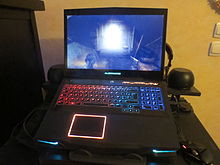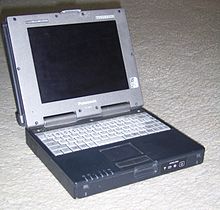- ACME 2
- :
- HI-Fi Products
- :
- Speakers
- :
- Re: New portable speakers
- Float Topic for All Users
- Subscribe to RSS Feed
- Mark Topic as New
- Mark Topic as Read
- Float this Topic for Current User
- Bookmark
- Subscribe
- Printer Friendly Page
- Feature this Topic
- Escalate Topic
New portable speakers
- Mark as New
- Bookmark
- Subscribe
- Subscribe to RSS Feed
- Permalink
- Report Inappropriate Content
New portable speakers
Please send the list of latest portable speakers
- Mark as New
- Bookmark
- Subscribe
- Subscribe to RSS Feed
- Permalink
- Accept as Solution
- Report Inappropriate Content
Re: New portable speakers
Is there any discount on old speakers
- Mark as New
- Bookmark
- Subscribe
- Subscribe to RSS Feed
- Permalink
- Accept as Solution
- Report Inappropriate Content
Re: New portable speakers
As the personal computer (PC) became feasible in 1971, the idea of a portable personal computer followed. A "personal, portable information manipulator" was imagined by Alan Kay at Xerox PARC in 1968,[5] and described in his 1972 paper as the "Dynabook".[6]
The IBM Special Computer APL Machine Portable (SCAMP) was demonstrated in 1973. This prototype was based on the IBM PALM processor.[7]
The IBM 5100, the first commercially available portable computer, appeared in September 1975, and was based on the SCAMP prototype.[8]
As 8-bit CPU machines became widely accepted, the number of portables increased rapidly. The Osborne 1, released in 1981, used the Zilog Z80 and weighed 23.6 pounds (10.7 kg). It had no battery, a 5 in (13 cm) CRT screen, and dual 5.25 in (13.3 cm) single-density floppy drives. In the same year the first laptop-sized portable computer, the Epson HX-20, was announced.[9] The Epson had a LCD screen, a rechargeable battery, and a calculator-size printer in a 1.6 kg (3.5 lb) chassis. Both Tandy/RadioShack and HP also produced portable computers of varying designs during this period.[10][11]
The first laptops using the flip form factor appeared in the early 1980s. The Dulmont Magnum was released in Australia in 1981–82, but was not marketed internationally until 1984–85. The US$8,150 (US$19,980 today) GRiD Compass 1100, released in 1982, was used at NASA and by the military among others. The Gavilan SC, released in 1983, was the first computer described as a "laptop" by its manufacturer.[12] From 1983 onward, several new input techniques were developed and included in laptops, including the touchpad (Gavilan SC, 1983), the pointing stick (IBM ThinkPad 700, 1992) and handwriting recognition (Linus Write-Top,[13] 1987). Some CPUs, such as the 1990 Intel i386SL, were designed to use minimum power to increase battery life of portable computers and were supported by dynamic power management features such as Intel SpeedStep and AMD PowerNow! in some designs.
Displays reached VGA resolution by 1988 (Compaq SLT/286), and colour screens started becoming a common upgrade in 1991 with increases in resolution and screen size occurring frequently until the introduction of 17"-screen laptops in 2003. Hard drives started to be used in portables, encouraged by the introduction of 3.5" drives in the late 1980s, and became common in laptops starting with the introduction of 2.5" and smaller drives around 1990; capacities have typically lagged behind physically larger desktop drives. Optical storage, read-only CD-ROM followed by writeable CD and later read-only or writeable DVD and Blu-ray, became common in laptops early in the 2000s.
Classification
Since the introduction of portable computers during late 70s, their form has changed significantly, spawning a variety of visually and technologically differing subclasses. Except where there is a distinct legal trademark around a term (notably Ultrabook) there are rarely hard distinctions between these classes, and their usage has varied over time and between different sources.
Traditional laptop
The form of a traditional laptop computer is a clamshell, with a screen on one of its inner sides and a keyboard on the opposite. It can be easily folded to conserve space while traveling. The screen and keyboard are inaccessible while closed. Devices of this form are commonly called a 'traditional laptop' or notebook, particularly if they have a screen size of 11 to 17 inches measured diagonally and run a full-featured operating system like Windows 10, OS X or Linux. Traditional laptops are the most common form of laptops, although Chromebooks, Ultrabooks, convertibles and laplets (described below) are becoming more common, with similar performance being achieved in their more portable or affordable forms.
Subnotebook
A subnotebook or an ultraportable is a laptop designed and marketed with an emphasis on portability (small size, low weight and often longer battery life). Subnotebooks are usually smaller and lighter than standard laptops, weighing between 0.8 and 2 kg (2-5 lb),[14] with a battery life exceeding 10 hours.[15] Since the introduction of netbooks and ultrabooks, the line between subnotebooks and either category has been blurry. Netbooks are a more basic and cheap type of subnotebook, and while some ultrabooks have a screen size too large to qualify as subnotebooks, certain ultrabooks fit in a subnotebook category. One notable example of a subnotebook is Apple Macbook Air.
Netbook
The netbook was an inexpensive, light-weight, energy-efficient form of laptop, especially suited for wireless communication and Internet access.[16][17] Netbooks first became commercially available around 2008, weighing under 1 kg, and with a display size of under 9". The name netbook (with net short for Internet) is used as "the device excels in web-based computing performance".[18] To begin with, netbooks were mostly sold with light-weight variants of the Linux operating system, although later versions often have Windows XP or Windows 7 operating systems. The term "netbook" is largely obsolete,[19] although machines that would have once been called netbooks—small, inexpensive, and low powered—never ceased being sold, in particular the smaller Chromebook models.
- Mark as New
- Bookmark
- Subscribe
- Subscribe to RSS Feed
- Permalink
- Accept as Solution
- Report Inappropriate Content
Re: New portable speakers
ok
- Mark as New
- Bookmark
- Subscribe
- Subscribe to RSS Feed
- Permalink
- Accept as Solution
- Report Inappropriate Content
Re: New portable speakers
What is the best way to find a thing for my sepeaker







